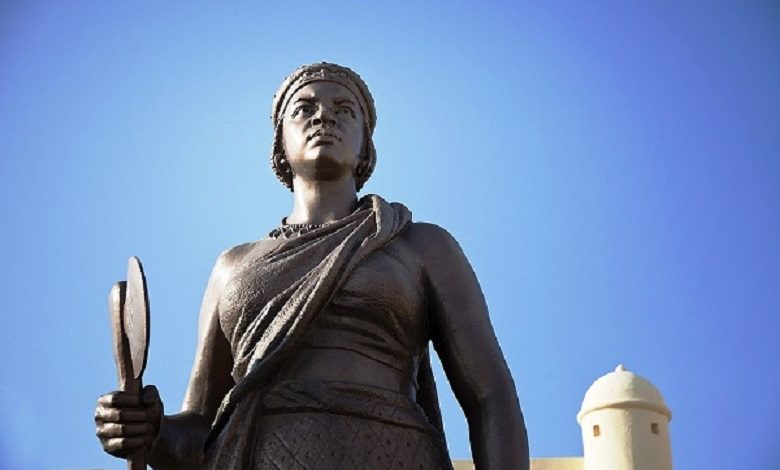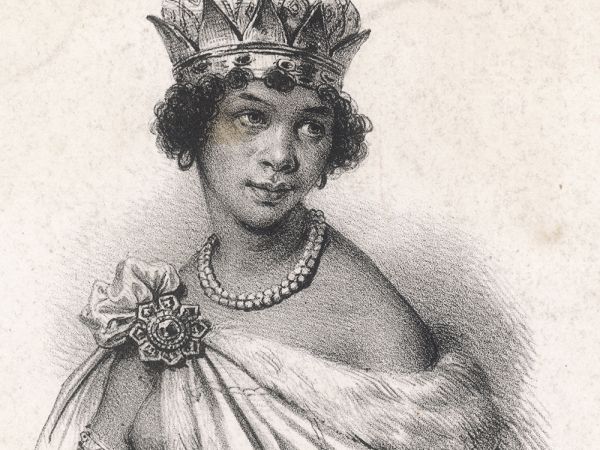Who was Queen Anna (Nzinga)?

Queen Anna 1, who was also known as Nzinga, was a Christian black Queen. She officially abolished polygamy, instituted several other pro-Christian laws in her kingdom.
Europeans often contrasted their armies as Christian and state-bearing with African armies as pagan and living almost in packs in colonizing Africa. The conquerors, as is characteristic of conquerors, were very deceptive. For example, there was a long period when the Portuguese were confronted one by one by Christian queens in the history of Angola, and they sought help from other black Christians. To no avail.
Queen Anna
However, Portuguese troops invaded the kingdom of Matamba. The Matamba troops fought back fiercely, the Portuguese suffered significant losses, but they were only stopped near the capital. There was a long history leading up to this war; many counts it from Queen Anna I, also known as Nzinga. This was not the name of the ruler of the Portuguese – it was the name of the first known ruling Queen in the history of Angola, the daughter of King Kilombo and his favorite concubine Kangela.

All previous generations of women in royal families were either daughters and sisters of kings or their concubines. To Anne, born Nzinga, the chance to be something more was given by Christianity, which her family adopted – and all subsequent queens (and kings, by the way) adhered firmly to it. No, the new faithfully satisfied many African monarchs – for example, Christianity was adopted by the royal family in neighboring Congo.
Queen Anna is one of the few queens that Europeans knew about. There were two stories about her. The first is that when she came to the negotiations with the Europeans, she found that the chair was only for the representative of the other side. She was meant to stand or sit on the floor. But Anna called one of the servants – he got down on all fours, and she sat on his back, retaining her royal dignity.
The second story, as often happens, is nasty. It was as if Queen Anne was obsessed with carnal intimacy with men. Every evening she forced several young warriors to fight each other for this honor to the death. She spent the night with the winner, and the following day he was executed. The same story was told about two other African queens, the Egyptian Cleopatra and the Hausa Amina, so it was probably part of standard propaganda against foreign rulers.
What grows out of beloved daughters
Anna herself did not think about the throne until her brother-king poisoned her son in order, so to speak, to get rid of unnecessary heirs. The princess’s rage knew no bounds. She poisoned her brother in response. After that, there was no one to sit on the throne, except for Anna, so that the essentially patriarchal inhabitants of her native kingdom quite calmly accepted the accession of a woman. Moreover, they learned about the Queen of Sheba from the missionaries who brought Christianity. If there was once a black queen somewhere, why couldn’t they have their own?

Anna was also greatly helped by the fact that she grew up as her father’s favorite. For fun, he taught her military skills, from weaponry to how to fight. She often accompanied her father in all kinds of ceremonies and rituals, at ceremonies and royal courts. When the missionaries reached the Kingdom of Ndongo, not only did her father baptize Anna, but he also made sure that she learned to read and write in Portuguese with a far-sighted view. No, he did not prepare her to rule, but African princes and kings
Soldiers often followed the missionaries. The Portuguese conquered region after region, starting with the ports. King Kilombo died, his sons too, and Anna was faced with preserving the lands of her ancestors. After becoming Queen, she annexed the kingdom of Matamba to her lands; then, she used diplomacy, negotiating a military alliance with the Dutch and King Alvaro VI. She was not looking for King Alvaro in Europe. This name was borne by her neighbor, the King of the Congo, in which black Christians had been sitting on the throne for many generations. The official religion in the Congo was also Christianity. So in 1641, an army of three Christian kings marched against the Portuguese, and two were black.
Slave trade feuds
Meanwhile, in Anna’s pagan kingdom (true, Christians were still in the minority), a new order was established. Anna officially abolished polygamy, instituted several other pro-Christian laws, and eventually founded a significant city to move her capital eventually. She bought back or repossessed the peasants who had been taken into slavery and returned them to their land. True, this applied only to the peasants of Ndongo. The people of Matamba, she, quietly sold to the Dutch in exchange for military aid. She considered the Matambans as her spoils of war after annexing their lands to her ancestors’ lands.
Taking back the marginal lands of Ndongo proved difficult. The Congolese and Dutch abandoned Queen Anna, and she continued the resistance alone. She even renounced Christianity in a fury for a time but then returned to it. Year after year, she was squeezed until in 1648, the exhausted Portuguese managed to get her sister Anna Barbara as a hostage and offered the equally exhausted Anna to officially become a vassal of the Portuguese King in exchange for her sister’s life

According to history, Anna chose to surrender. She signed an agreement in exchange for the return of that part of Ndongo, which she owned at the time of accession. After that, she ruled until eighty-two years, even though the Portuguese sent assassins to her several times. The endless advances of troops and the deportation of peasants into slavery destroyed agriculture, and Anna saved the country, managing to switch it to ensure trade relations in Central Africa. Ndongo and Matamba became the safest crossroads of the caravan routes. In Angola, Anna I is still revered. The Guterres dynasty began with it, which ruled until the middle of the 19th century.
After the murder of her son, Anna never tried to have children again, even through adoption. Her mother’s heart was broken. Anna was succeeded by her sister, Barbara, who ruled for three years before dying under strange circumstances.




